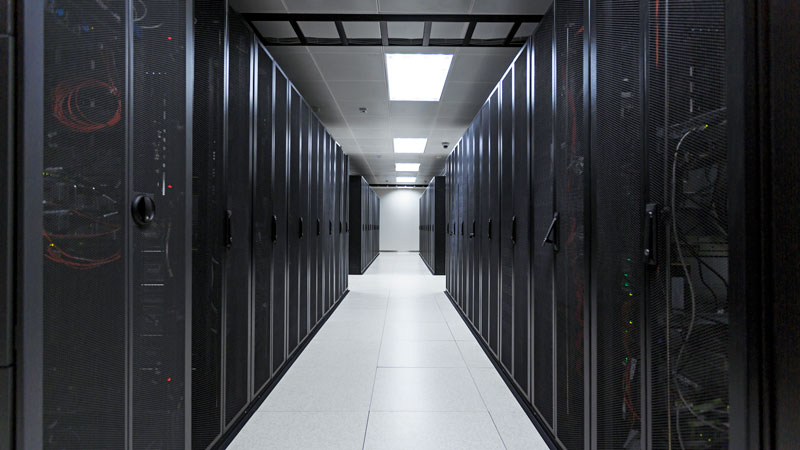At the beginning of 2022, Microsoft announced that it was planning a new data center in the state of Queretaro, Mexico, that would provide services to businesses worldwide. This new data center is part of the “Innovate for Mexico” plan, which contemplates an investment of US$1.1 billion over five years.
At the end of 2021, Amazon Web Services (AWS) also announced that during 2022 it would install cloud infrastructure zones in Argentina, Chile and Colombia. Prior to this announcement, AWS only had one zone in Latin America, located in Brazil.
Among these investments, there are others by Odata (US$271 million in Chile and Mexico), Ascenty (US$750 million in Brazil, Chile, and Mexico), and Equinix (US$136 million in Brazil), which were also announced at the end of last year and that show the boom that hyperscale data centers are having in the region.
During the pandemic, digitalization soared and internet traffic on a global scale increased by 35% in 2020, representing the largest annual increase since 2013, according to a UNCTAD report. Latin America contributed to this trend, with Cisco data showing that while in 2018 60% of the regional population were Internet users, by 2023 that number will reach 70%. The increase in data generation and consumption has led to hyperscale data center growth in response to the demand for processing.
Positioning The Region on The Hyperscale
The growing number of investments in the last two years in the region predicts an optimistic outlook. Industry leaders envision that in the next 5 years, Latin American countries will begin to appear on the list of hyperscale nations, behind big players such as the United States, China, and Japan. However, for this to happen, the region needs to work on ensuring five key drivers:
- Greater availability for connectivity and redundant routing: According to the study “Impact of hyperscales in Latin America”, by Data Center Dynamics, this is the main priority to attract investment from hyperscalers, according to 75% of market leaders. The study highlights the recent effort that Latin America is making to renew and extend its connectivity of submarine and terrestrial cables.
According to data reported by BNAmericas, the region has quintupled its connectivity capacity in the last 20 years, through 68 submarine cables. - Government incentives: To nurture investment, governments should implement policies that guarantee the autonomous operation of data centers and that reinforce the electrical and telecommunications infrastructure for the entry of new players.
It is no coincidence that Microsoft has selected the city of Queretaro in Mexico to execute an investment of this level. For years, the state government has been promoting a pro-industry approach of "three pillars," which contemplates the exchange between government, academia and industry. In 2020, the PEDETI program was also promoted, and this year the Queretaro Digital Plan was announced to encourage digital development in the region. - Closing the talent gap: The shortage of specialized talent in data centers is a reality that affects the entire world. The Uptime Institute determined that by 2025 there will be a shortage of about 21,000 professionals in the region, especially electrical and mechanical engineers. Closing this gap is fundamental to attract investments from hyperscale data centers and to allow their ongoing presence in the region.
In the region, initiatives such as the Latin American STEM Network coordinated by the Siemens Stiftung Foundation or the WISE community (Woman In STEM Entrepreneurship) of the IDB LAB, seek to promote the approach of young people to careers in science, technology, engineering and mathematics (STEM), in order to further boost technological growth and offer the talent that companies are demanding. - A more energy efficient infrastructure: According to data from the International Energy Agency (IEA) compiled in the UNCTAD report, in 2022 the energy consumption of hyperscale data centers will represent almost 50% of the energy consumption of all data centers. A renewable energy grid, with competitive prices, will help to make the region more attractive to tech players focused on sustainability and innovation.
- Availability of industrial land: The lack of space in the main cities of the region has forced data centers to migrate to alternate locations. Queretaro is an example of this. 68% of the leaders surveyed by Data Center Dynamics consider it necessary to identify new locations and promote the development of specific business parks for hyperscale.
Emulating The Mexican Development Model
Despite being a young player in the data center industry compared to Brazil or Chile, Mexico is today the main recipient of cloud provider and colocation investments, because its digital economy has grown consistently for long periods. As shown in the Data Center Dynamics survey, “Impact of hyperscalers in Latin America 2021”, with responses from CEOs, IT Managers and consultants of the regional data center market, 28% consider Mexico as the main market to execute expansion plans.
The country has made some moves to become a Latin American data center hub. Like Mexico, other countries in the region have huge potential to play a role in the hyperscale industry.





